Consequences of a substance abuse disorder
Risk factors of drug abuse
Alcohol disorder
Consequences of alcohol and drug use in pregnancy
How to stop alcohol and drug use
Treatment programs
When to seek urgent medical care
Substance abuse among teenagers

CONSEQUENCES OF SUBSTANCE ABUSE DISORDER
The consequences of substance abuse disorder can be severe and wide-ranging, impacting various aspects of an individual’s life. Some of these consequences include:
- Health issues: Substance abuse can lead to a range of physical and mental health problems, including liver disease, cardiovascular issues, respiratory problems, mental health disorders such as depression and anxiety, and increased risk of infectious diseases like HIV/AIDS.
- Social and relationship problems: Substance abuse can strain relationships with family members, friends, and colleagues. It may lead to conflicts, breakdowns in communication, and social isolation as individuals prioritize substance use over maintaining healthy connections.
- Financial difficulties: Supporting a substance abuse habit can be expensive, leading to financial strain. Individuals may spend large amounts of money on drugs or alcohol, neglecting other financial responsibilities such as bills, rent, or mortgage payments.
- Legal issues: Substance abuse can lead to involvement in illegal activities, such as drug possession, distribution, or driving under the influence. This can result in legal consequences, including fines, probation, or imprisonment, further exacerbating the individual’s problems.
- Employment and educational challenges: Substance abuse can interfere with an individual’s ability to fulfill work or school responsibilities. Absenteeism, decreased productivity, and impaired cognitive function can jeopardize employment or academic success, leading to job loss, expulsion, or academic probation.
- Risk of overdose or injury: Substance abuse increases the risk of accidental overdose, especially when individuals consume drugs or alcohol in excessive amounts or combine them with other substances. Additionally, impaired judgment and coordination under the influence of substances can lead to accidents, injuries, or even fatalities.
- Decline in self-care: Individuals struggling with substance abuse may neglect their physical health and hygiene, leading to poor nutrition, inadequate sleep, and neglect of personal grooming habits. This decline in self-care can further exacerbate health issues and contribute to a diminished quality of life.
- Use of the drug at illegal locations or times: Individuals may engage in drug use in prohibited or inappropriate settings, such as using drugs in public places or during work hours.
- Craving for the drug: Substance dependence often manifests as intense cravings or urges to use the drug, even when it leads to negative consequences.
- Inability to manage without the drug: Dependence on drugs or alcohol can lead to a perceived inability to function or cope with daily life without the substance.
- Lying, stealing, and secrecy: Individuals may engage in deceptive or dishonest behaviors to hide their substance abuse or obtain drugs.
- Reluctance to introduce friends: Due to stigma or fear of judgment, individuals may be hesitant to introduce friends or loved ones to their social circle involved in substance abuse.
- Dry cough: Certain drugs, particularly those that are smoked, can cause respiratory issues such as a persistent dry cough.
- Not sleeping: Substance abuse can disrupt normal sleep patterns, leading to insomnia or irregular sleep-wake cycles.
- Hallucinations: Some substances, such as hallucinogens or stimulants, can induce hallucinations or perceptual distortions.
Symptoms of substance abuse
- Frequent use of breath fresheners: Individuals may use breath fresheners excessively to mask the odor of alcohol or drugs on their breath.
- Red eyes: Bloodshot or red eyes can be a sign of drug use, particularly with substances like marijuana.
- Change in behavior and attitude: Substance abuse can lead to mood swings, irritability, aggressiveness, or apathy towards responsibilities or relationships.
- Loss of interest and decreased attendance at school or work: Substance abuse may result in decreased motivation, interest, or engagement in work or academic activities.
- Mood swings: Substance abuse can contribute to mood instability, leading to unpredictable emotional reactions.
- Needle marks on the arm or other areas of the body: Injection drug use can result in visible puncture marks or scars, often found on the arms or other accessible areas.
- Small, “pinpoint” pupils in the eyes: Constricted or pinpoint pupils can indicate opioid use or intoxication.
Risk factors of drug abuse include:
- Family history of drug abuse: Genetics can play a role in predisposing individuals to drug abuse if they have a family history of substance use disorders.
- Health problems: Physical or mental health issues can increase the likelihood of turning to drugs as a means of self-medication or coping with symptoms.
- Experimenting: Curiosity or peer pressure may lead individuals to experiment with drugs, increasing the risk of developing substance abuse problems.
- Early age at first use: Initiating drug use at a young age, particularly during adolescence, is associated with a higher risk of developing substance abuse disorders later in life.
- History of depression or mental issues: Individuals with a history of depression, anxiety, trauma, or other mental health disorders may turn to drugs as a way to alleviate symptoms, leading to substance abuse.
- Family conflict: Dysfunctional family dynamics, conflict, or inadequate parental supervision can contribute to increased susceptibility to drug abuse.
- Abuse: Physical, emotional, or sexual abuse during childhood or adulthood can increase the likelihood of using drugs as a coping mechanism.
- Invisible parents: Lack of parental involvement, supervision, or positive role modeling can leave children vulnerable to peer influences and experimentation with drugs.
- Lack of supervision: Inadequate supervision or monitoring by parents or caregivers can create opportunities for adolescents to engage in drug use without consequences.
- Access to the substance: Easy access to drugs, either within the household or through social networks, increases the risk of experimentation and subsequent abuse.
- Peer pressure: Influence from peers who use drugs or engage in risky behaviors can pressure individuals into trying substances, especially during adolescence.
- Promotion of drugs in the media: Exposure to glamorized or normalized portrayals of drug use in media, including movies, music, and social media, can influence attitudes and behaviors related to substance abuse.
- Being used by relatives and friends: Exploitative relationships where individuals are encouraged or coerced into using drugs by peers or family members can contribute to substance abuse.
- Trying to achieve a sense of purpose: Feelings of aimlessness, low self-esteem, or lack of direction in life may lead individuals to seek purpose or identity through drug use, increasing the risk of addiction.
ALCOHOL DISORDER
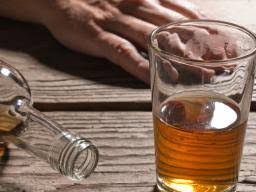
Alcohol disorder is a serious problem that affects millions of people around the world. It is characterized by an excessive consumption of alcohol, which can lead to physical dependence, impaired functioning, and psychological distress. Alcohol disorders often co-occur with other mental health issues such as depression, anxiety, and substance use disorders. Without proper treatment, alcohol disorder can cause a range of negative impacts on one’s life, including decreased quality of life, financial hardship due to high medical costs, and social issues such as damaged relationships and legal problems. The World Health Organization estimates that 3 million deaths every year are related to drinking too much alcohol; it is also associated with a higher risk for developing certain types of cancer. Treatment for alcohol disorder ranges from psychotherapy and support groups to medication-assisted therapies and lifestyle changes.
TREATMENT FOR ALCOHOL DISORDER

LONG TERM PROBLEMS FROM DRINKING
Long-term alcohol abuse can lead to various physical, mental, and social problems, including:
- Liver disease: Chronic alcohol consumption can cause liver damage, leading to conditions such as fatty liver, alcoholic hepatitis, fibrosis, and cirrhosis. Cirrhosis is a serious and irreversible condition characterized by scarring of the liver tissue, which can eventually result in liver failure.
- Cardiovascular problems: Prolonged alcohol abuse is associated with an increased risk of high blood pressure, heart disease, cardiomyopathy (weakening of the heart muscle), arrhythmias (irregular heartbeats), and an increased risk of stroke.
- Gastrointestinal issues: Alcohol can irritate the lining of the stomach and intestines, leading to gastritis, ulcers, and an increased risk of gastrointestinal bleeding. It can also contribute to pancreatitis, a painful inflammation of the pancreas.
- Neurological disorders: Chronic alcohol abuse can damage the brain and nervous system, resulting in cognitive impairment, memory loss, difficulties with coordination and balance, peripheral neuropathy (nerve damage), and an increased risk of conditions such as dementia and Wernicke-Korsakoff syndrome.
- Mental health disorders: Alcohol abuse is closely linked to mental health issues such as depression, anxiety, and increased risk of suicide. Heavy drinking can exacerbate existing mental health conditions and impair judgment and decision-making.
- Social and interpersonal problems: Alcohol abuse can strain relationships with family, friends, and coworkers, leading to conflicts, isolation, and social withdrawal. It can also contribute to financial difficulties, unemployment, legal problems, and social stigma.
- Increased risk of cancer: Chronic alcohol consumption is a known risk factor for various types of cancer, including cancers of the liver, breast, throat, esophagus, colon, and rectum. Alcohol can damage cells and increase inflammation, which may contribute to the development of cancerous tumors.
- Weakened immune system: Alcohol abuse can weaken the body’s immune response, making individuals more susceptible to infections and illnesses. Chronic drinkers may experience frequent infections, delayed wound healing, and an increased risk of serious complications from infectious diseases.
- Reproductive health issues: Alcohol can interfere with reproductive hormones and function, leading to sexual dysfunction, infertility, and an increased risk of pregnancy complications such as miscarriage, stillbirth, and fetal alcohol spectrum disorders (FASDs) in pregnant women.
- Social consequences: Long-term alcohol abuse can lead to social isolation, alienation from loved ones, and difficulties maintaining employment or fulfilling social roles. It can also contribute to legal problems, financial instability, and a diminished quality of life.
ALCOHOL OR DRUG USE DURING PREGNANCY
Alcohol or drug use during pregnancy can have serious and potentially lifelong consequences for both the mother and the developing fetus. Here are some key points to consider regarding substance use during pregnancy:
Alcohol consumption during pregnancy can lead to a range of birth defects and developmental disabilities, collectively known as fetal alcohol spectrum disorders (FASDs). These can include physical, behavioral, and intellectual disabilities that can affect a child for their entire life. The most severe form of FASD is fetal alcohol syndrome (FAS), characterized by facial abnormalities, growth deficiencies, and central nervous system problems.
Illicit drug use during pregnancy can have harmful effects on the developing fetus, depending on the type of drug, the frequency of use, and the stage of pregnancy. Drugs such as cocaine, methamphetamine, heroin, and prescription opioids can increase the risk of preterm birth, low birth weight, developmental delays, birth defects, and neonatal withdrawal symptoms (neonatal abstinence syndrome) in newborns. Marijuana use during pregnancy may also have adverse effects on fetal development and has been associated with cognitive and behavioral problems in children.
Substance use during pregnancy can increase the risk of pregnancy complications, including miscarriage, stillbirth, placental abruption, and preterm labor. It can also contribute to maternal health problems such as hypertension, preeclampsia, and anemia, which can negatively impact both the mother and the baby’s health.
Neonatal Withdrawal: Babies born to mothers who used drugs during pregnancy may experience withdrawal symptoms shortly after birth, known as neonatal abstinence syndrome (NAS). NAS can cause irritability, feeding difficulties, tremors, seizures, and respiratory problems in newborns, requiring medical intervention and specialized care.
In many jurisdictions, substance use during pregnancy is considered child abuse or neglect, and mothers may face legal repercussions, including involvement with child protective services or even loss of custody of their children. Substance use can also strain relationships, lead to social stigma, and affect the mother’s ability to care for her child.
Pregnant women struggling with substance use disorders should seek medical care and support as soon as possible to protect their health and the health of their unborn child. Treatment options may include prenatal care, substance abuse counseling, medication-assisted treatment, residential programs, and support groups. Early intervention and comprehensive care can improve pregnancy outcomes and reduce the risk of harm to both the mother and the baby.
CONSEQUENCES OF ALCOHOL AND DRUG USE IN PREGNANCY
-
Preterm Birth: Illicit drug use during pregnancy is associated with an increased risk of preterm birth, where the baby is born before completing 37 weeks of gestation. Preterm infants may face health challenges and require specialized medical care.
- Low Birth Weight: Drug use during pregnancy, particularly substances like cocaine and methamphetamine, can lead to low birth weight in newborns, which increases the risk of health problems and developmental delays.
- Birth Defects: Certain drugs, such as opioids and prescription medications, can cause birth defects in newborns, affecting their physical development and increasing the likelihood of long-term health issues.
- Neonatal Withdrawal Syndrome: Babies born to mothers who used drugs during pregnancy may experience neonatal withdrawal syndrome, also known as neonatal abstinence syndrome (NAS). NAS occurs when the baby is exposed to drugs in the womb and experiences withdrawal symptoms after birth, including irritability, tremors, feeding difficulties, and respiratory problems.
- Developmental Delays: Prenatal drug exposure can impact the baby’s brain development and cognitive functioning, leading to developmental delays, learning disabilities, and behavioral problems later in life.
-
Long-Term Health Effects: Children exposed to drugs in utero may be at higher risk of health problems, including respiratory issues, infections, and neurological disorders, which can affect their quality of life and require ongoing medical care.
Cocaine
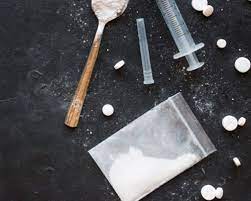
Cocaine is a powerful stimulant drug derived from the leaves of the coca plant. It works by increasing levels of dopamine and serotonin in the brain, resulting in intense feelings of euphoria and alertness. When used recreationally, cocaine can be snorted, injected or smoked and produces a “high” that is often followed by an unpleasant comedown. Despite its potential for abuse, cocaine has some medical uses, such as a topical anesthetic or as part of certain treatments for addiction. Cocaine can also be made into a paste form called crack which is more easily smokeable and creates an even greater sense of euphoria. Unfortunately, cocaine use carries serious risks to both physical and mental health including depression, anxiety, paranoia and addiction. More effects include:
• Seizures
• Hallucinations
• Fluid in the lungs (pulmonary edema)
• Breathing problems
• Heart problems
• Stillbirth
• Low Apgar score
• Stroke
• Deformed reproductive or urinary organs
• Sudden infant death syndrome (SIDS)
Ecstasy
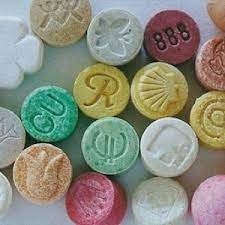
Ecstasy, also known as methylenedioxymethamphetamine (MDMA), is a synthetic drug that affects the brain and body. It produces feelings of euphoria, closeness to others, and heightened senses. Effects can last several hours and include increased energy levels and alertness. Ecstasy has been around since 1912 when it was first synthesized by German chemist Anton Köllisch, but it did not become popular until the 1970s following reports of its effects in psychotherapy sessions. In recent years, ecstasy has become increasingly popular at nightclubs, raves, and music festivals due to its reputation as a party drug. However, excessive use of this drug can have dangerous side effects such as anxiety attacks, insomnia, paranoia, depression, learning problems, long-term memory problems and even death.
Heroin
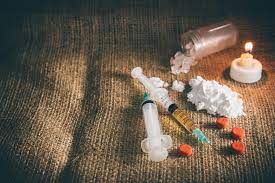
Heroin is an illicit drug derived from the opium poppy plant. It is a highly addictive substance that can cause serious physical and mental health consequences for those who use it. Heroin is used by people in many ways, including injecting, snorting, or smoking it. When taken, heroin enters the bloodstream quickly and produces an intense rush of pleasure followed by a state of relaxation. Unfortunately, regular use of heroin can lead to physical dependence and addiction, with users experiencing severe withdrawal symptoms upon cessation of use. Additionally, long-term health effects associated with heroin use include chronic respiratory issues and weakened immune systems due to exposure to impure substances and shared needles. More effects include:
• Preeclampsia
• Bleeding in the third trimester
• Placenta abruptio
• Seizures
• Withdrawal symptoms after birth
• Breathing problems
• Small size at birth
• Physical and mental development problems
Inhalants
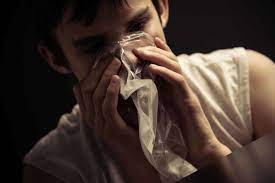
Inhalants are a widely available, yet highly dangerous type of drug. Commonly found in everyday household items such as paint thinners, aerosol sprays, and even cleaning products, inhalants provide a quick-acting high when inhaled that can result in serious health risks or even death. When people use inhalants they are essentially huffing or sniffing chemicals that can cause a variety of physical and mental effects. This can include feeling lightheaded or euphoric, confusion, slurred speech, slowed reflexes and breathing problems. In some cases of long-term use, inhalants can lead to permanent damage to the brain and other organs. Additionally, using inhalants increases the risk of sudden sniffing death syndrome that causes cardiac arrest due to an irregular heartbeat. More effects include:
• Life-threatening breathing problems
• Convulsions or seizures
• Coma
• Low birth weight
• Problems with how bones form
• Learning problems
Marijuana
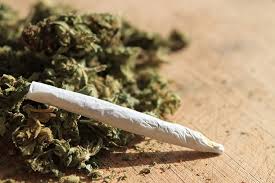
Marijuana, also known as cannabis, is a psychoactive drug derived from the Cannabis sativa plant. It has been used for centuries by humans for recreational, medicinal and spiritual purposes. Though it is illegal in many parts of the world, marijuana remains one of the most popular recreational drugs in the world today. The active ingredient in marijuana is delta-9-tetrahydrocannabinol (THC), which produces its psychoactive effects on users. In addition to THC, marijuana is also composed several other substances that possess varying pharmacological properties such as cannabidiol (CBD), cannabinol (CBN) and tetrahydrocannabivarin (THCV). These components produce different effects on users depending on the strain of cannabis they consume. Short-term effects of marijuana include changes in mood, increased appetite, altered perception and relaxation among others. However long-term use can lead to addiction and other health problems like bronchitis and impaired cognitive functions. More effects include:
• Tremors
• Easily startled
• Cranky or fussy
• Learning problems
• Attention deficit hyperactivity disorder
• Depression
• Substance use disorder
Methamphetamine
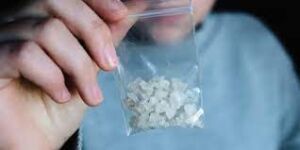
Methamphetamine is a highly addictive stimulant drug that produces intense feelings of euphoria and alertness. It has an immensely high potential for abuse and addiction, making it one of the most dangerous drugs on the market today. The chemical composition of methamphetamine is similar to amphetamine, but with a higher potency than its predecessor. This drug can be taken orally, smoked, snorted, or injected into veins or muscles. When used in large doses or over extended periods of time, methamphetamine can cause serious physical and psychological problems. Common side effects include increased heart rate, raised blood pressure, sleeplessness, agitation, paranoia, mood swings and aggression. Methamphetamines also have long-term effects including memory loss, reduced cognitive function and addiction. More effects include:
• Stroke
• Brain damage
• Miscarriage
• Placenta abruptio
• Low birth weight
• Heart and lung problems
PCP/LSD
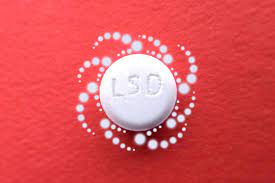
PCP (Phencyclidine) and LSD (Lysergic Acid Diethylamide) are both powerful hallucinogenic drugs. These drugs have been known to produce vivid and often intense sensory experiences, including altered perceptions of time, sound, color, and touch. PCP is a dissociative anesthetic that was developed in the 1950s as a surgical anesthetic. It produces extreme feelings of detachment from one’s environment and can cause hallucinations, delusions, muscle rigidity and confusion. LSD on the other hand is an ergot-derived hallucinogenic drug which alters a person’s thoughts and perceptions. Effects typically begin within 30 to 90 minutes after ingestion and can last between 8 to 12 hours. People who use PCP or LSD may experience visual distortions as well as impaired judgment, mood disturbances, paranoia, disorganized thinking and impaired motor coordination. More effects include:
• Confusion
• Delusions
• Hallucinations
• Risk of overdose
• Withdrawal symptoms after birth
• Learning problems
• Emotional problems
• Behavior problems
HOW TO STOP ALCOHOL AND DRUG USE
Stopping alcohol and drug use can be challenging, but it is possible with the right approach and support system. Here are some strategies to help individuals stop alcohol and drug use:
- Recognize the Need for Change: The first step in stopping alcohol and drug use is acknowledging the need for change. Recognize the negative impact that substance abuse is having on your life and the lives of those around you.
- Set Goals: Set specific, achievable goals for reducing or eliminating alcohol and drug use. Start with small, manageable steps and gradually work towards larger goals.
- Avoid Triggers: Identify and avoid triggers that lead to alcohol and drug use. This may include certain people, places, or situations that are associated with substance abuse.
- Seek Support: Reach out to friends, family members, or support groups for help and encouragement. Surround yourself with positive influences who support your decision to stop using alcohol and drugs.
- Consider Counseling: Consider seeking professional counseling or therapy to address underlying issues related to substance abuse, such as trauma, depression, or anxiety. Therapy can provide valuable support and coping strategies for managing cravings and triggers.
- Join Support Groups: Joining support groups like Alcoholics Anonymous (AA) or Narcotics Anonymous (NA) can provide additional support and accountability on the road to recovery. These groups offer a safe space to share experiences, gain insights, and learn from others who have overcome similar challenges.
- Practice Self-Care: Take care of your physical and emotional well-being by prioritizing self-care activities such as exercise, healthy eating, adequate sleep, and stress management techniques like mindfulness or meditation.
- Develop Healthy Coping Strategies: Find alternative ways to cope with stress, boredom, or negative emotions that don’t involve alcohol or drugs. Engage in hobbies, interests, and activities that bring you joy and fulfillment.
- Create a Supportive Environment: Surround yourself with supportive people and create a healthy, drug-free environment in your home and social circle. Avoid situations or relationships that may tempt you to relapse.
-
Stay Committed: Recovery from alcohol and drug addiction is a journey that requires commitment, patience, and perseverance. Stay focused on your goals, celebrate your progress, and seek help if you experience setbacks or challenges along the way.
TREATMENT PROGRAMS
Treatment programs for alcohol and drug addiction vary depending on individual needs and preferences, but they typically include a combination of the following components:
- Counseling and Therapy: One-on-one counseling sessions with a licensed therapist or counselor can help individuals explore the underlying issues contributing to their addiction, develop coping strategies, and set achievable goals for recovery. Group therapy sessions may also be beneficial for building support networks and learning from others in similar situations.
- Inpatient or Outpatient Treatment: Inpatient treatment programs, also known as residential programs, provide 24/7 care and support in a structured environment. Outpatient treatment programs allow individuals to receive therapy and support while living at home and attending scheduled sessions at a treatment facility.
- Detoxification (Detox): Detoxification is the process of removing toxins from the body and managing withdrawal symptoms that occur when discontinuing substance use. Medical detox programs provide supervised care and medical support to ensure the safety and comfort of individuals during this critical phase of recovery.
- Medication-Assisted Treatment (MAT): MAT involves the use of medications, in combination with counseling and behavioral therapies, to help individuals manage cravings, reduce withdrawal symptoms, and prevent relapse. Common medications used in MAT include methadone, buprenorphine, and naltrexone for opioid addiction, and medications like acamprosate and disulfiram for alcohol addiction.
- Support Groups: Support groups such as Alcoholics Anonymous (AA), Narcotics Anonymous (NA), and SMART Recovery offer peer support, encouragement, and accountability for individuals in recovery. These groups provide a safe space to share experiences, receive guidance, and learn from others who have overcome addiction.
- Dual Diagnosis Treatment: Dual diagnosis treatment addresses co-occurring mental health disorders, such as depression, anxiety, or trauma, that often accompany substance abuse. Integrated treatment approaches address both substances use disorders and mental health conditions simultaneously to promote holistic healing and long-term recovery.
- Holistic Therapies: Holistic therapies, such as yoga, meditation, art therapy, and acupuncture, complement traditional treatment modalities by addressing the physical, emotional, and spiritual aspects of addiction recovery. These therapies can help individuals reduce stress, improve self-awareness, and cultivate a sense of balance and well-being.
- Aftercare Planning: Aftercare planning involves developing a personalized plan for ongoing support and relapse prevention after completing a formal treatment program. This may include continued therapy, participation in support groups, regular check-ins with a therapist or counselor, and access to community resources and services.
- Family Involvement: Family therapy and education programs involve family members in the recovery process, providing education, support, and communication skills to help repair relationships, set healthy boundaries, and foster a supportive home environment conducive to long-term sobriety.
-
Continued Monitoring and Evaluation: Continued monitoring and evaluation of progress are essential components of successful treatment programs. Regular assessments, follow-up appointments, and adjustments to treatment plans ensure that individuals receive the ongoing care and support needed to maintain sobriety and achieve their recovery goals.
ROLE OF LOVED ONES IN THE RECOVERY JOURNEY
Loved ones play a crucial role in the recovery journey of individuals struggling with alcohol and drug addiction. Their support, encouragement, and involvement can significantly impact the success of a person’s recovery. Here are some key roles loved ones can play:
- Emotional Support: Loved ones can provide emotional support by offering empathy, understanding, and encouragement to the individual in recovery. They can listen non-judgmentally, validate their feelings, and provide reassurance during challenging times.
- Encouragement and Motivation: Loved ones can motivate and inspire the individual in recovery to stay committed to their sobriety goals. By offering words of encouragement, celebrating milestones, and expressing belief in their ability to overcome challenges, loved ones can help boost the individual’s confidence and motivation.
- Setting Boundaries: Setting healthy boundaries is important for both the individual in recovery and their loved ones. Family members and friends can establish clear boundaries to protect their own well-being while also supporting the individual’s sobriety. This may include setting limits on enabling behaviors, refusing to participate in substance use, and prioritizing self-care.
- Education and Awareness: Loved ones can educate themselves about addiction, recovery, and available resources to better understand the challenges their family member or friend may be facing. By learning about addiction as a disease and the recovery process, loved ones can provide informed support and guidance.
- Participation in Treatment: Family involvement in treatment can enhance the effectiveness of recovery efforts. Loved ones may participate in family therapy sessions, support group meetings, and educational workshops to gain insight into addiction dynamics, improve communication skills, and strengthen relationships.
- Creating a Supportive Environment: Creating a supportive and nurturing environment at home can contribute to the individual’s recovery journey. This may involve removing triggers and temptations, promoting healthy lifestyle choices, and fostering open communication and trust within the family.
- Practicing Self-Care: It’s essential for loved ones to prioritize their own well-being and self-care while supporting someone in recovery. This may include seeking support from other family members or support groups, attending therapy or counseling, engaging in hobbies and activities that bring joy, and setting boundaries to protect their own mental and emotional health.
- Celebrating Progress: Celebrating the individual’s progress and achievements, no matter how small, can reinforce positive behaviors and provide motivation to continue on the path of recovery. Loved ones can acknowledge milestones such as days of sobriety, completion of treatment goals, and positive changes in behavior.
- Offering Practical Support: Practical support, such as assistance with transportation, childcare, or household chores, can alleviate stressors and barriers to recovery for the individual. Loved ones can offer practical help to reduce the individual’s burden and facilitate their focus on recovery.
-
Being Patient and Understanding: Recovery is a journey that involves ups and downs, setbacks, and successes. Loved ones can demonstrate patience, understanding, and resilience, recognizing that recovery takes time and may involve relapses or setbacks. By offering unconditional love and support, loved ones can help the individual navigate the challenges of recovery with resilience and determination.
HOW TO PREVENT SUBSTANCE ABUSE AMONG TEENAGERS
Preventing substance abuse among teenagers requires a comprehensive approach that addresses various factors influencing their behavior. Here are some strategies:
- Education and Awareness Programs: Implement educational programs in schools and communities that provide accurate information about the risks and consequences of substance abuse. These programs should highlight the negative effects of drugs and alcohol on physical health, mental well-being, academic performance, and future opportunities.
- Promotion of Healthy Coping Mechanisms: Teach teenagers healthy ways to cope with stress, peer pressure, and negative emotions without resorting to substance use. Encourage them to engage in activities such as sports, arts, hobbies, and socializing with supportive peers.
- Parental Involvement and Monitoring: Foster strong parental involvement and communication. Parents should actively engage with their teenagers, set clear expectations and boundaries regarding substance use, and monitor their activities and behavior. Encourage open dialogue between parents and teenagers about substance abuse, peer pressure, and decision-making.
- Role Modeling: Be positive role models for teenagers by demonstrating healthy behaviors and responsible attitudes toward alcohol and drugs. Avoid using substances in front of teenagers and emphasize the importance of making healthy choices and respecting oneself and others.
- Limit Access to Substances: Reduce teenagers’ access to drugs and alcohol by securely storing medications, alcohol, and other potentially harmful substances at home. Monitor their internet and social media activity to prevent online exposure to drug-related content or illegal purchasing.
-
Peer Resistance Skills: Teach teenagers assertiveness and refusal skills to resist peer pressure to use drugs or alcohol. Help them practice saying “no” confidently and assertively in situations where they feel pressured to engage in substance use.
WHEN TO SEEK URGENT MEDICAL CARE
It is important to know when to seek urgent medical care, as delaying appropriate treatment can lead to further health complications. If you experience any of the following symptoms, you should seek medical help immediately. If you have any doubts about whether you should seek medical care, it is always better to err on the side of caution and consult with your doctor. Here are some signs and situations that warrant immediate medical attention:
- Symptoms of Overdose: If an individual exhibits signs of a drug or alcohol overdose, such as unconsciousness, difficulty breathing, irregular heartbeat, seizures, extreme confusion, or unresponsiveness, seek emergency medical assistance immediately by calling emergency services or going to the nearest emergency room.
- Withdrawal Symptoms: If someone experiences severe withdrawal symptoms when attempting to quit or reduce substance use, including intense cravings, nausea, vomiting, tremors, hallucinations, seizures, or delirium tremens (for alcohol withdrawal), they may require medical detoxification and supervision to manage the withdrawal safely.
- Suicidal Thoughts or Behavior: Individuals struggling with substance abuse may experience feelings of hopelessness, depression, or suicidal ideation. If someone expresses suicidal thoughts, threatens self-harm, or exhibits suicidal behavior, it is essential to seek immediate help from mental health professionals, crisis hotlines, or emergency services.
- Psychiatric Emergencies: Substance abuse can exacerbate underlying mental health conditions or precipitate psychiatric emergencies. If someone experiences severe agitation, psychosis, paranoia, or violent behavior, they may require emergency psychiatric evaluation and treatment to ensure their safety and stabilize their condition.
- Accidental Injuries: Substance abuse increases the risk of accidents, injuries, and trauma due to impaired judgment, coordination, and reaction time. Seek medical attention promptly for any injuries sustained while under the influence of drugs or alcohol, including falls, burns, cuts, or motor vehicle accidents.
- Severe Medical Complications: Substance abuse can lead to serious medical complications, such as liver damage, cardiovascular issues, respiratory problems, infections, or overdose-related injuries. If someone experiences severe or worsening symptoms related to substance abuse, including chest pain, difficulty breathing, jaundice, or unexplained pain, seek medical evaluation without delay.
- Concerns About Safety or Well-Being: Trust your instincts and seek medical assistance if you have concerns about someone’s safety, well-being, or ability to care for themselves due to substance abuse. Err on the side of caution and seek professional help if you believe the situation warrants it, even if the individual does not recognize the severity of their condition.
-
Inability to Control Substance Use: If someone struggles to control their substance use despite negative consequences, experiences cravings, or continues to use substances despite wanting to quit or cut back, they may benefit from professional intervention, counseling, or addiction treatment services.
Disclaimer: The information provided in this content is for general informational purposes only. It is not intended as medical or healthcare advice, diagnosis, or treatment. Always seek the advice of a qualified healthcare professional with any questions you may have regarding a medical condition or healthcare decisions.

